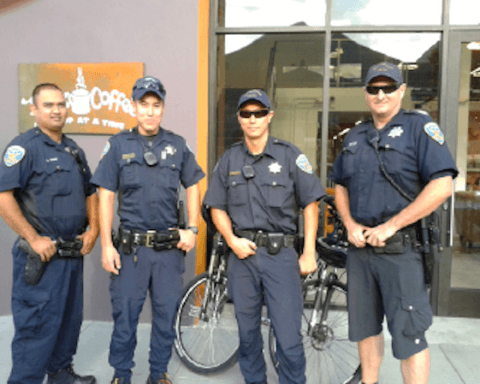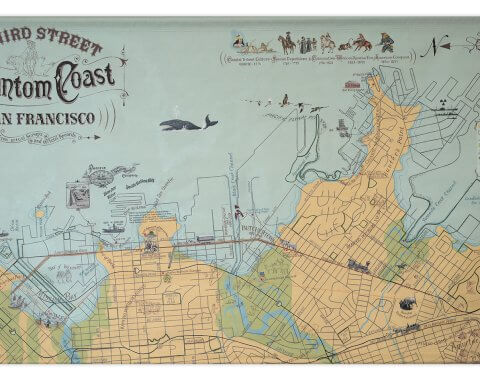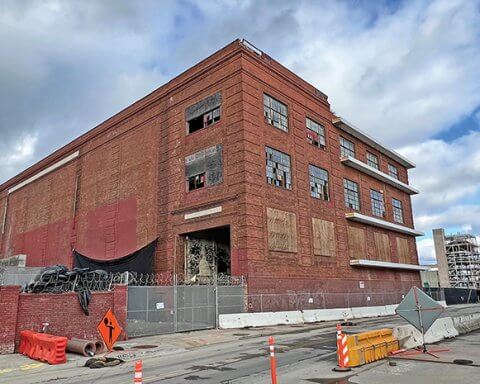By J. Eric Miller
Robots have walked, well, rolled, the streets of 21st Century San Francisco, but whether they’ll do so in the future is uncertain. Led by District 7 Supervisor Norman Yee, the San Francisco Board of Supervisors passed legislation last year that restricts the use of delivery robots. Initially calling for an outright ban on the mechanisms, Yee expressed fears of sidewalk collisions, pointing to potential threats to children and the elderly. The adopted ordinate reflects a compromise, allowing for safety testing, with an undefined possibility for eventual robot deployment.
Under the ordinance, operators are required to secure a permit to perform safety tests before fielding automatons, deploy no more than three robots during the testing phase, and be confined to areas that are designated production, distribution, and repair (PDR) zones, such as Dogpatch and Showplace Square.
“The legislation makes it more difficult to operate in San Francisco than in most other cities, but we’ve been collaborating closely with the City and are hopeful we can make it work,” said Craig Frucht, spokesperson for Marble, a robot courier company headquartered in Bayview that applied for a permit in May. “Marble is proud to be a San Francisco company, and we’d love to be able to operate here in the long-term. San Francisco’s high density and extreme traffic congestion present challenges that Marble is uniquely equipped to help solve; by taking trucks off neighborhood streets, building ties between communities and local businesses that are currently losing business to e-commerce giants, and making food and package delivery faster and cheaper for City residents.”
If the permit application is approved by the Department of Public Works and testing is successful in Dogpatch and Showplace Square, Marble will have to grapple with requirements that it can only operate in low foot-traffic area. “This permit application concerns only testing, not any commercial delivery, so it’s premature to comment on the eventual business impact of those limitations,” said Frucht.
“Delivery robots are likely to make some workers nervous that they may lose their jobs or see their hours reduced,” said Kristin Harknett, co-director of The Shift Project at the Institute for Research on Labor and Employment, University of California, Berkeley. The Shift Project “has collected survey data from thousands of retail workers across the country, and most workers report that want more weekly work hours, and almost three-quarters report that it is somewhat or very difficult to pay their bills. The increased reliance on technology for job tasks such as deliveries could make these problems even worse.”
“I don’t know the metrics, but there are two possible effects: the displacement of drivers and other delivery jobs, and the creation of employment in other sectors for people who are trained, educated, and technically savvy,” said Denise Kleinrichert, Interim Associate Dean, San Francisco State University’s (SFSU) College of Business and former director of SFSU’s Center for Ethical and Sustainable Business.
Kleinrichert suggested that the implications of robot deployment would depend on its scope, characterizing potential workforce impacts as “an analysis issue of the actual numbers regarding development of new or changes in existing employment. We could make similar arguments regarding any new technology – cell phones versus land lines, emails versus phone calls – and how unskilled vs skilled labor is impacted. Delivery robots require technology to develop, manufacturing to create the robots, delivering the robots to specific neighborhoods to make the deliveries using sidewalks since they are not street vehicles, loading the robots with the ordered goods/items, maintenance of the robots, and possibly some other economic impacts. There is a myriad of environmental impacts regarding any new product or service, for example: environmental impacts of the manufacturing of the autonomous robots.”
Marble’s permit application identifies one of its goals as catering to the elderly and disabled. However, receiving a robot delivery would require customers to meet the machine outside their buildings, a limitation Frucht said Marble is working to overcome. “We are exploring ways to serve more people directly at their door in the future. With our current operations, seniors and customers with disabilities would benefit from being able to have more products delivered to them more quickly and at lower cost. For many people, being able to go to the curb outside their house instead of a mile to the grocery store or pharmacy would make a big difference,” he said, without commenting on what door-to-actual-door delivery methods Marble is exploring.





